Genus Abies Higher classification Fir | Division Pinophyta Scientific name Abies alba Rank Species | |
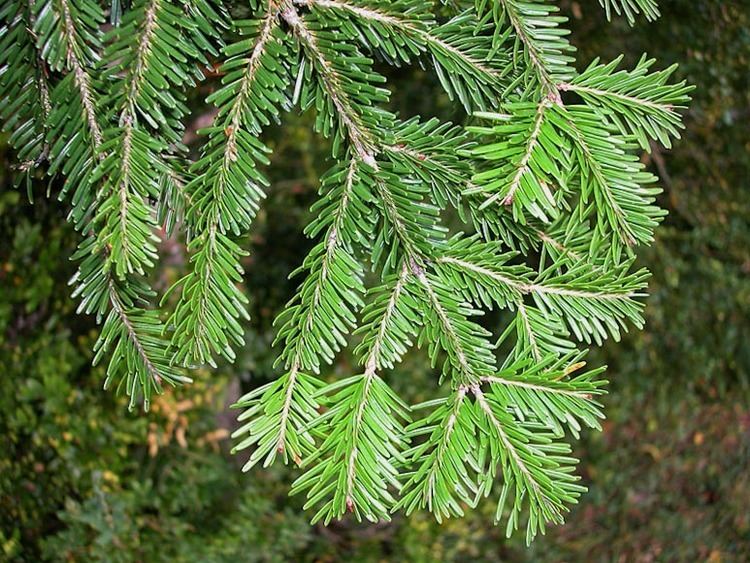 | ||
Similar Fir, Spruce, Norway spruce, Abies nordmanniana, Pinales | ||
Abies alba tree fact sheet
Abies alba, the European silver fir or silver fir, is a fir native to the mountains of Europe, from the Pyrenees north to Normandy, east to the Alps and the Carpathians, Slovenia, Croatia, Bosnia and Herzegovina, Serbia and south to Italy, Bulgaria and northern Greece.
Contents
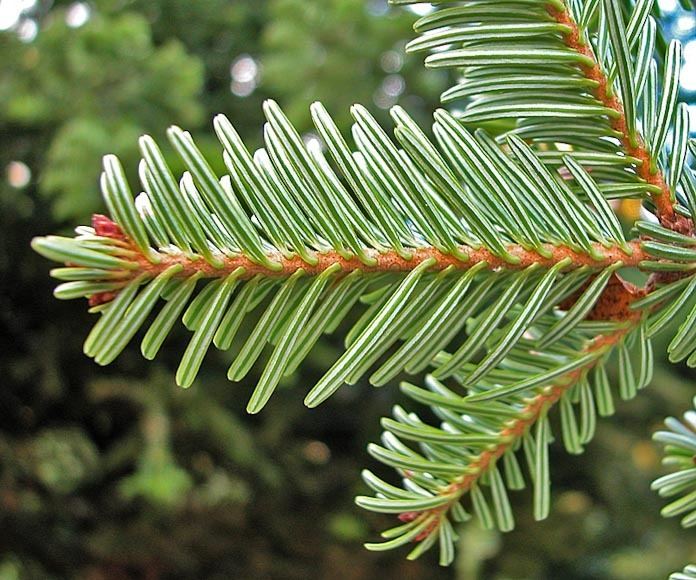
Abies alba or silver fir bonsai
Description

Abies alba is a large evergreen coniferous tree growing to 40–50 metres (130–160 ft) (exceptionally 60 metres (200 ft)) tall and with a trunk diameter of up to 1.5 metres (4 ft 11 in). The largest measured tree was 68 m tall and had a trunk diameter of 3.8 metres (12 ft). It occurs at altitudes of 300–1,700 metres (980–5,580 ft) (mainly over 500 metres (1,600 ft)), on mountains with a rainfall of over 1,000 millimetres (39 in).
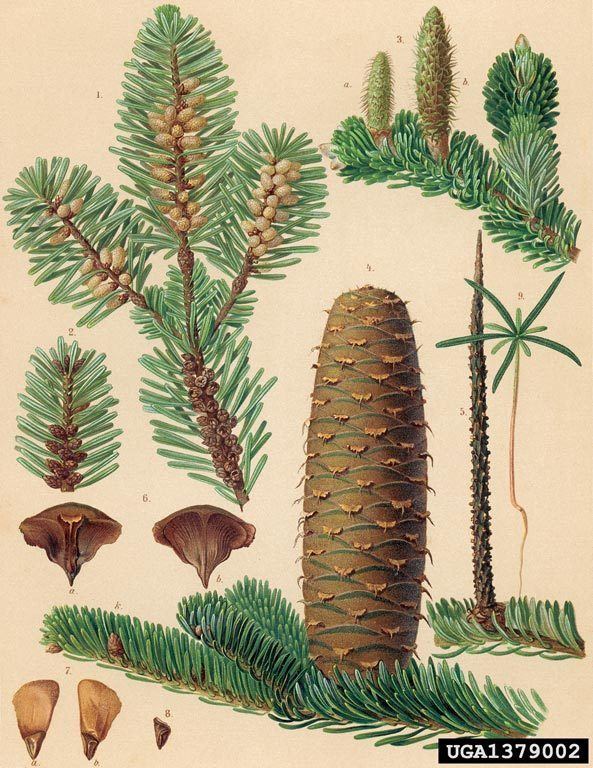
The leaves are needle-like, flattened, 1.8–3 centimetres (0.71–1.18 in) long and 2 millimetres (0.079 in) wide by 0.5 millimetres (0.020 in) thick, glossy dark green above, and with two greenish-white bands of stomata below. The tip of the leaf is usually slightly notched at the tip. The cones are 9–17 centimetres (3.5–6.7 in) long and 3–4 centimetres (1.2–1.6 in) broad, with about 150-200 scales, each scale with an exserted bract and two winged seeds; they disintegrate when mature to release the seeds. The wood is white, leading to the species name "alba".
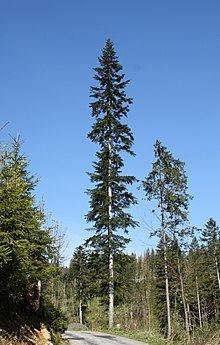
It tends to forms woods with other firs and beeches. It is closely related to Bulgarian fir (Abies borisiiregis) further to the southeast in the Balkan Peninsula, Spanish fir (Abies pinsapo) of Spain and Morocco and Sicilian fir (Abies nebrodensis) in Sicily, differing from these and other related Euro-Mediterranean firs in the sparser foliage, with the leaves spread either side of the shoot, leaving the shoot readily visible from above. Some botanists treat Bulgarian fir and Sicilian fir as varieties of silver fir, as A. alba var. acutifolia and A. alba var. nebrodensis respectively.
Ecology
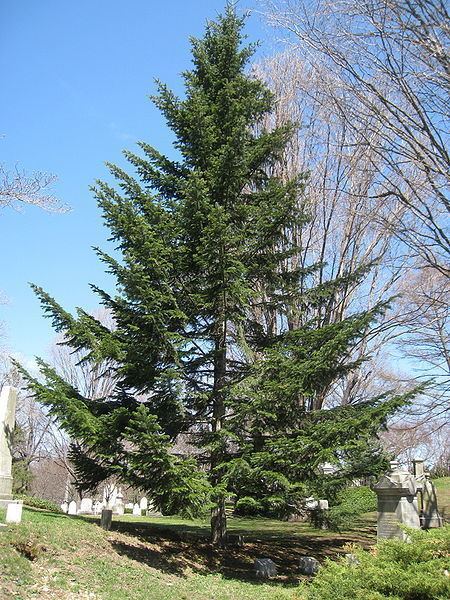
Silver fir is an important component species in the Dinaric calcareous Silver Fir forest in the western Balkan Peninsula.

Its cone scales are eaten by the caterpillars of the tortrix moth Cydia illutana, while C. duplicana feeds on the bark around injuries or canker.
Chemistry
The bark and wood of silver fir are rich in antioxidative polyphenols. Six phenolic acids were identified (gallic, homovanillic, protocatehuic, p-hydroxybenzoic, vanillic and p-coumaric), three flavonoids (catechin, epicatechin and catechin tetramethyl eter) and four lignans (taxiresinol, 7-(2-methyl-3,4-dihydroxytetrahydropyran-5-yloxy)-taxiresinol, secoisolariciresinol and laricinresinol).
Uses
A resinous essential oil can be extracted. This pine-scented oil has soothing qualities, and is used in perfumes, bath products, and aerosol inhalants. Its branches (including the leaves, bark and wood) were used for production of spruce beer. The extract from the trunk was shown to prevent atherosclerosis and to have cardioprotective effect. Silver fir wood extract was found to reduce the post-prandial glycemic response (concentration of sugar in the blood after the meal). Silver fir is the species first used as a Christmas tree, but has been largely replaced by Nordmann fir (which has denser, more attractive foliage), Norway spruce (which is much cheaper to grow), and other species. The wood is strong, lightweight, light-coloured, finegrained, even-textured and longfibered. The timber is mainly used as construction wood, furniture, plywood, pulpwood and paper manufacture.
